Page 1 of 1
A good night
Posted: Sun May 01, 2016 12:34 pm
by Francisco Campos
Hi,
finally a good night after a cloudy day. At last! Four symbiotic stars and a Be star (Delta Sco). Every night I work with the DADOS, I am happier with this purchase. With the Atik 314L+ a resolution of 750 is a mean value and sometimes I reach 800. Not bat for a low-resolution spectrograph.

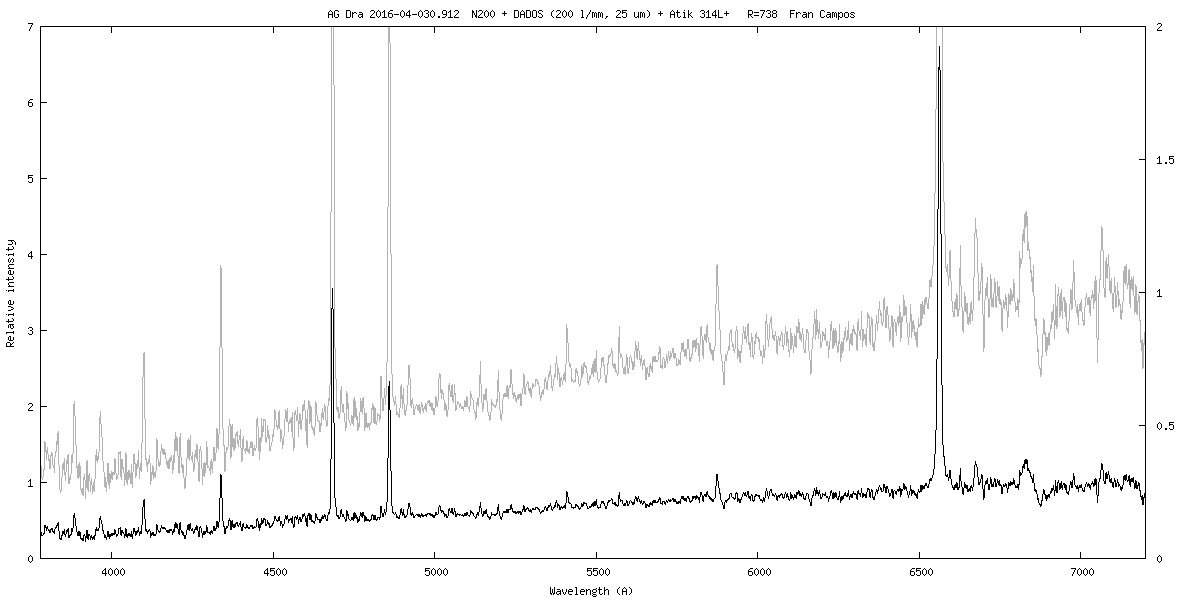
- AG Dra 20160430_912.png (14.37 KiB) Viewed 7059 times
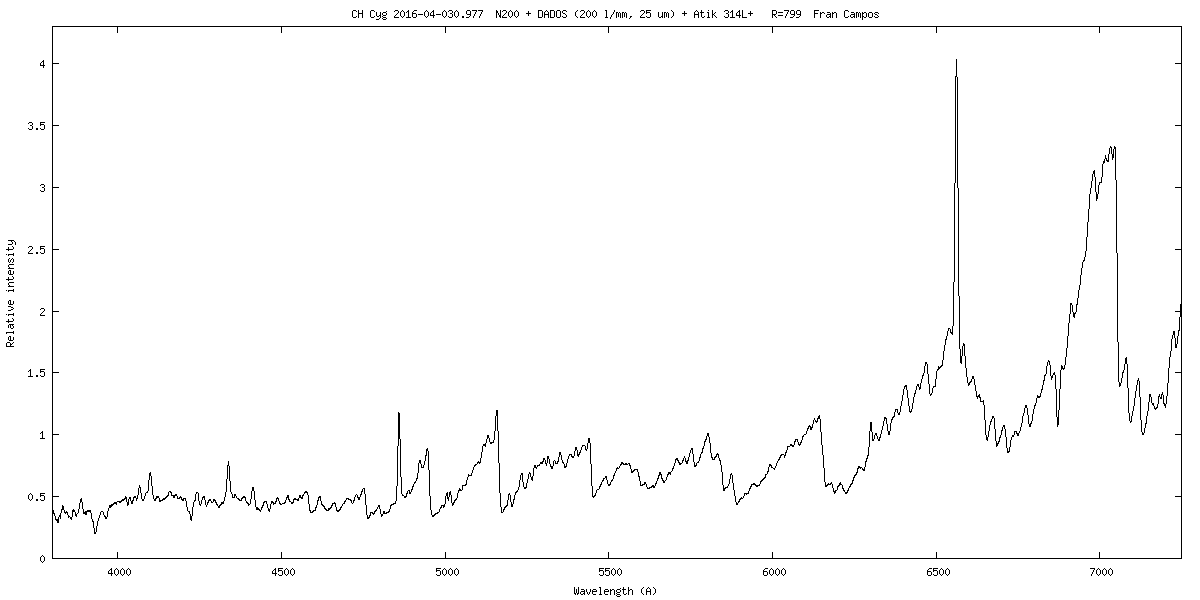
- CH Cyg 20160430_977.png (9.1 KiB) Viewed 7059 times
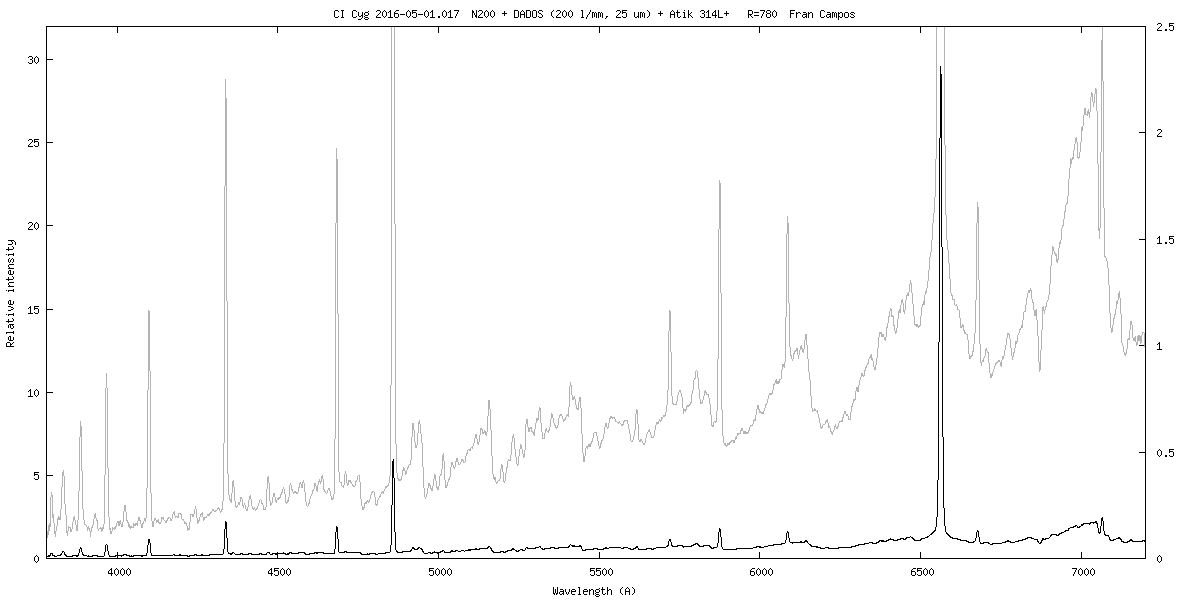
- CI Cyg 20160501_017.png (12.13 KiB) Viewed 7059 times
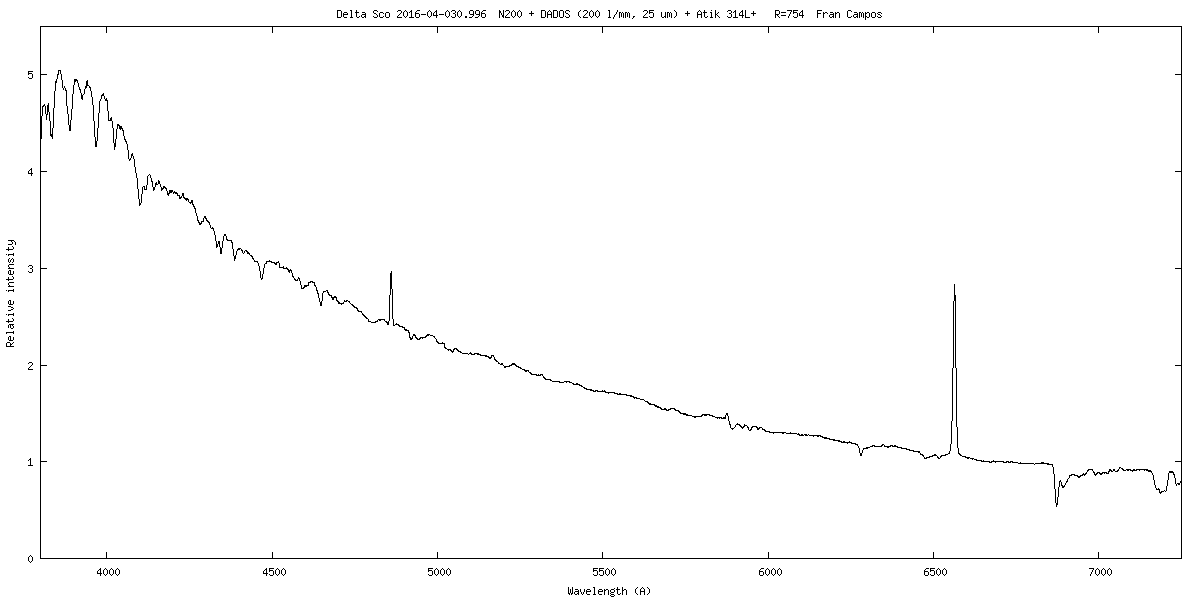
- Delta Sco 20160430_996.png (6.65 KiB) Viewed 7059 times
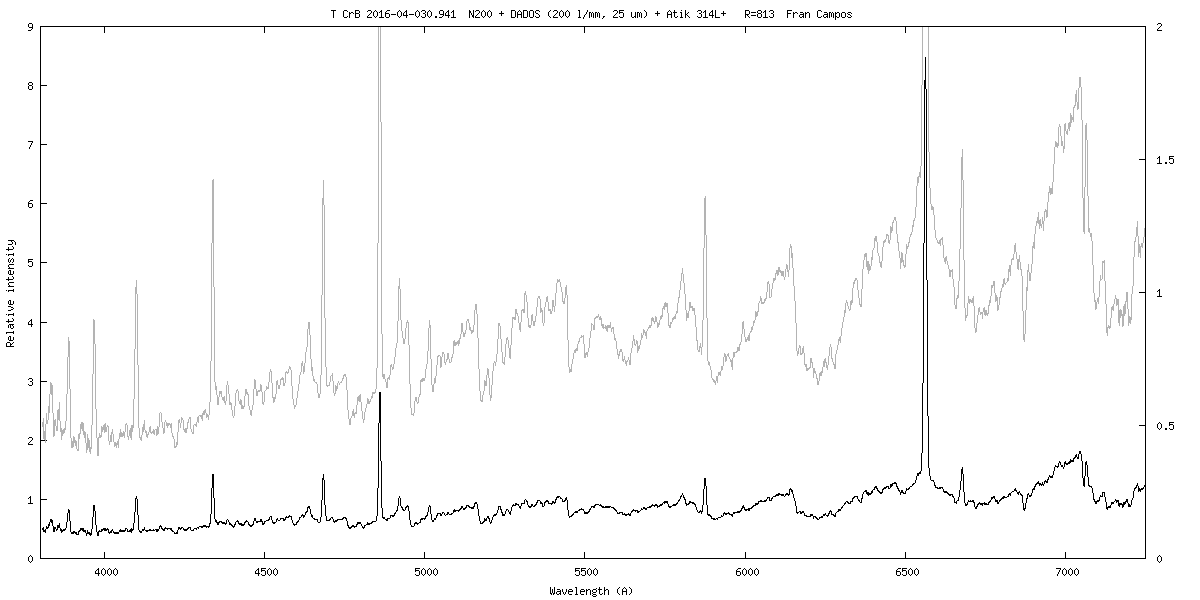
- T CrB 20160430_941.png (13.59 KiB) Viewed 7059 times
Greetings
Fran
Re: A good night
Posted: Tue May 10, 2016 7:50 pm
by James Foster
To: Fran,
I know this may be a controversial topic, but do you feel that the DADOS is more sensitive to dim objects (with the same detector) than the Alpy600? I'm probably going to buy another spectroscope (have the JTW L200) but I need one a little more sensitive that mine with a 150 ln/mm grating. I positive I see that the Alpy600 has is a self-contained flat-field module. One this that DADOS has over Alpy is the selectable gratings; 200, 900, & 1200 gratings. Here is my del SCO spectra from 10May16:
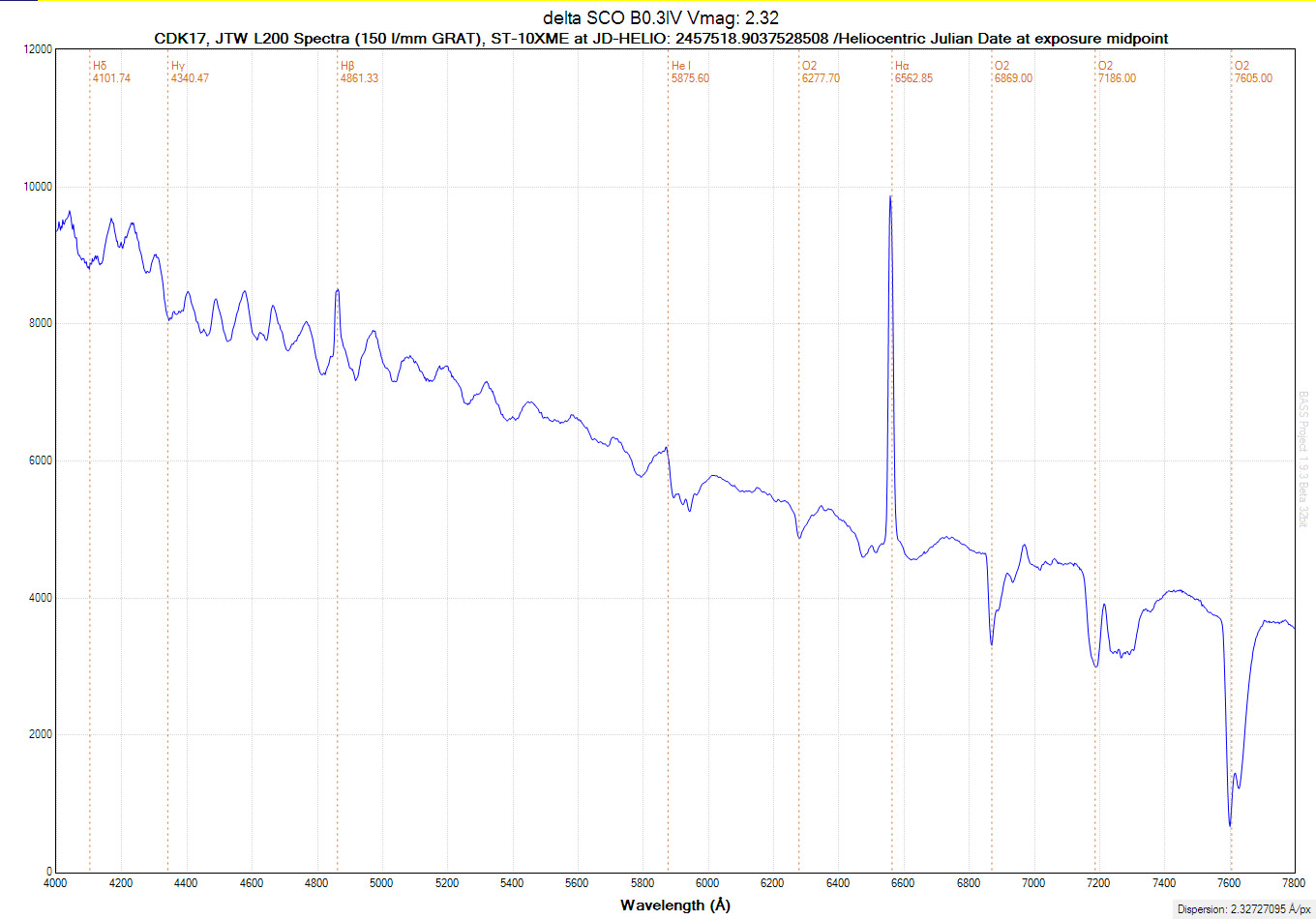
James
Re: A good night
Posted: Mon May 30, 2016 8:56 pm
by Francisco Campos
Hi, James,
difficult to reply. I have never worked with Alpy, but assuming that DADOS has a reflecting grating and Alpy a transmission grism, I think that DADOS takes some advantage, but the difference should be small.
I'm very happy with DADOS: I think it is more versatile thanks to the selectable gratings. The presence of 3 slits of 25, 35 and 50 um is another nice feature. It is true that calibrating an Alpy is more comfortable due to the calibration module, but calibrating a DADOS is not difficult: I take flats in a similar way as astrophotography (but with a 150W halogen lamp) and for the calibration in lambda I use a modified RELCO 480 4-80W glowstarted feeded front the aperture of the telescope (a fast Newton f/4.7 but with the focal doubled with a Barlow ED 2X). It is easy to build it and the budget is minimum.
Another difference is that a reflecting grating has a more linear dispersion than a grism, but with a suitable calibration this problem should be avoided.
DADOS is heavier than Alpy but if you have a decent focuser there shoudn't be a concern.
Greetings
Fran
P.S.: sorry for delay to reply. I didn't notice your post

Re: A good night
Posted: Wed Jun 01, 2016 6:49 am
by Olivier GARDE
I think to compare Dados with Alpy , we must see performance of this 2 spectrographes in terms of sensitivity.
The interest of a low- resolution spectrometer is that able to produce spectra of very faint targets like Sn Nova or PN confirmation
(see this post :
http://www.spectro-aras.com/forum/viewt ... =30&t=1356)
and this document :
https://www.dropbox.com/s/ypmg5k3evhn59 ... 5.pdf?dl=0
I don't know the efficiency of DADOS spectrograph, but the Alpy and also the LISA are very sensitive and we can reach very low magnitude.
Re: A good night
Posted: Wed Jun 01, 2016 7:53 am
by etienne bertrand
Bonjour Olivier,
Quelles sont les magnitudes de ces nébuleuses ?
Re: A good night
Posted: Wed Jun 01, 2016 8:39 am
by Olivier GARDE
etienne bertrand wrote:Bonjour Olivier,
Quelles sont les magnitudes de ces nébuleuses ?
Bonjour Etienne,
Difficile de répondre à cette question car les NP ne sont pas des objets ponctuels mais surfacique, donc parler de magnitude dans ce cas est un peu approximatif, mais on peut dire que celles ci sont supérieur à 16-17.
Ce qui permet de pouvoir les voir en spectro c'est leurs émissions en H Alpha et [OIII] qui montrent ainsi clairement leur signature de nébuleuse planétaire, c'est d'ailleurs comme cela que l'on arrive à les confirmer car sur les spectres on ne voit pas le continuum (trop faible).
C'est le genre de cible tout à fait accessible avec un ALPY ou LISA, voir les travaux de Pascal le Dû dans le dernier numéro de la revue l'astronomie sur KbFe 1 et Kn 33.
C'est le genre de campagne que des amateurs peuvent réaliser à conditions d'être très précis dans le pointage, le suivie et le traitement des spectres. Il y a pas mal de NP à confirmer.
Re: A good night
Posted: Wed Jun 01, 2016 3:01 pm
by Robin Leadbeater
A direct measurement of sensitivity comparing DADOS, ALPY and LISA would be interesting.
The 90 degree diffraction angle design of the DADOS is not normally the most efficient configuration for a reflection grating, though Baader claim to be using a specially designed grating.
Transmission gratings are not as efficient as reflective gratings, particularly as the line density is increased so a reflection grating should be more efficient than the ALPY grism.
The ALPY and LISA have faster optics than the DADOS (f5 compared with f10) which is a big advantage for nebulae/galaxies.
If you are looking for the most sensitive spectrograph for galaxies/nebulae I would say the LISA is probably the best option but I can record mag 17.5 supernovae with my C11 and an ALPY which I modified with a 200l/mm grism
http://www.threehillsobservatory.co.uk/ ... tra_46.htm
Cheers
Robin

